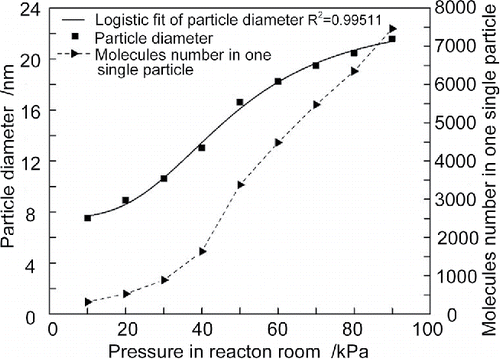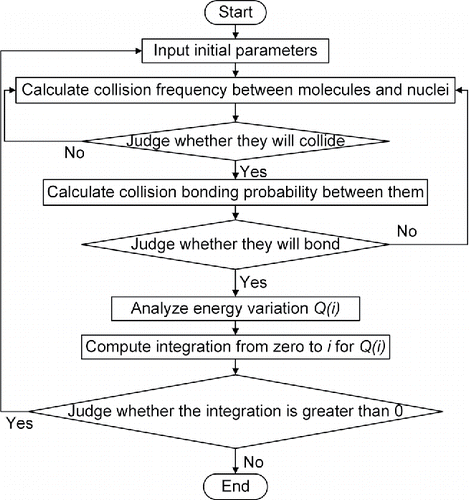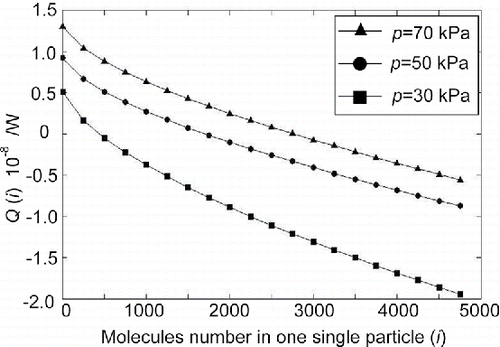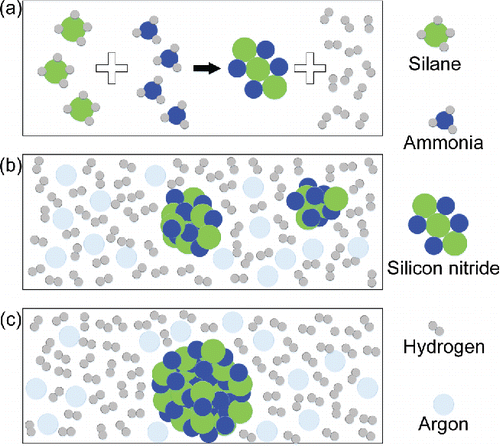Figures & data
Figure 1. Physical model for radiation and convection in ultrafine silicon nitride production through CVD. This represents silicon nitride nucleation and the condensation process of cooling by argon. Silicon nitride molecules result from the thermal chemical reaction between silane and ammonia. is the energy dissipated though radiative heat transfer, and
is the energy dissipated though convective heat transfer.
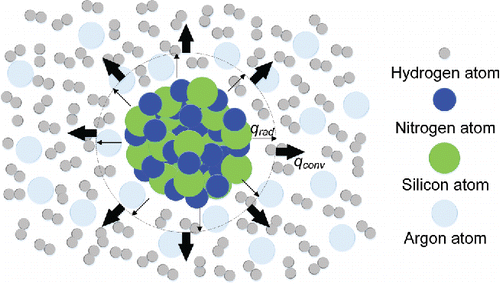
Figure 2. Energy exchanges because of collisions between silicon nitride molecules and argon atoms. Solid spheres in this figure represent silicon nitride molecules, and hollow ones represent argon atoms. Changes in color show how energy is transmitted. Assume , and
represents the initial temperature of the silicon nitride vapor,
represents the initial temperature of the inert gas.
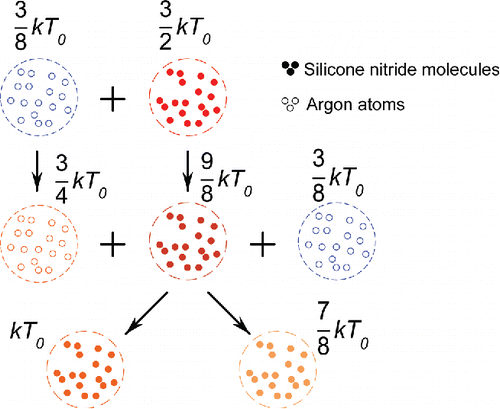
Figure 4. Flow diagram of laser-driven CVD experiment; feed gas are silane and ammonia, inert gas is argon.
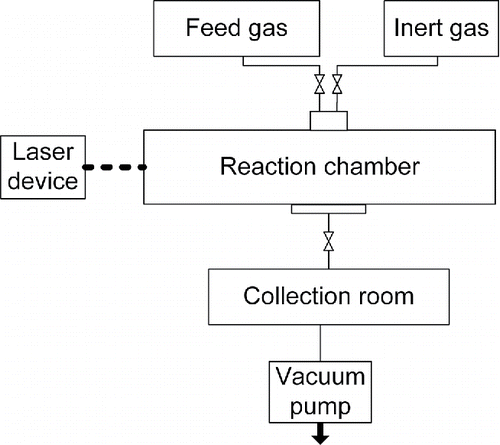
Figure 6. Diameter of silicon nitride particle and molecule number in the particle as a function of pressure in the condensation room.
